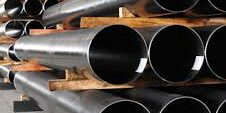Welcome back to another one of our special blogs revisiting some of our most frequently asked questions. This is part two in a limited series that compiles some of our best questions in a single blog. Being a leading PVF distributor, we like to make sure we’re always educating our customers. When they know what they’re talking about it helps us serve them better.
Also, the value of what we do and what we provide is that much more magnified. We want to consistently be the best at customer service in our industry and second to none in logistics. So, having educated customers plays a huge role in that mission.
So, let’s jump right in and get to those questions!
Houston’s Leading PVF Distributor Answers The Burning Questions
So, here we are again compiling the best questions asked of us throughout the year. Many revolve around the same topics, but we try to mix them up a bit. Remember, if you don’t see your question here—just call us.
What Are Valves?
Ok, so let’s get technical. A valve is a mechanical piece of equipment that blocks or regulates the amount of media that can flow through it. You encounter valves every day—turning on the faucet or using a gas stove for example. Valves control both fluid and gas and can be found in any machine that uses either. Even your body has valves—your heart has some important ones that are quite impressive.
Valves are normally constructed from plastic or metal and contain several different parts depending on their design. The outer section is referred to as the seat and is usually made of a solid metal casing with a rubber, or plastic seal inside. The body or the inner section of the valve fits inside the seat when the valve is in a closed position. There is also a mechanism for opening and closing the valve that varies based on the application of the valve.
Valves must close properly for their intended usage to prevent explosions, pollution, or loss of fluid and gas. The seal on a valve is a crucial component and must be in good shape to create a good seal when turned off. Turning a valve that has a high flow passing through it isn’t easy and requires some solid force. Some valves use levers to help with this, while others are too large for manual operation and use hydraulic rams.
Why Does Steel Pipe Need To Be ASTM Certified?
For all intents and purposes, there’s not a single PVF distributor, that buys components like steel pipe that aren’t certified to ASTM standards. That is because the World Trade Organization, (WTO) sets criteria for manufacturing standards for every industry.
These standards are critical as civil engineering and design follow these standards and they are based on principles of engineering and systems architecture. Without these standards, there would be no conformity and it would lead to poor design and chaos.
Additionally, government entities at all levels depend on these safety standards to guarantee the consistency and quality of materials. Although the standards are voluntary, virtually all entities follow ASTM standards. When government authorities are using these standards in contracts, building codes, laws, and regulations—they are mandatory.
ASTM standards are important because they assist engineers, builders, and other professionals. They use the standards to evaluate the chemical, material, mechanical and other properties of steel pipe and other metal components. There are currently more than 10,000 standards across many different industries.
For your application, no matter the industry or needs, it’s crucial to know which ASTM standards are needed. Different environments and applications will require certain tolerances or metal characteristics. When making the investment in materials for a project, you need to be confident that what you choose will perform as intended. For example, by using steel pipe that meets ASTM standards for oil & gas transfer, you can guarantee application compatibility.
What Does A PVF Distributor Carry Besides Pipe, Valves, And Fittings?
Even though those three components are commonly lumped together in the same bucket, each has its function, traits, and application. There are also quite a few parts and components in between such as hoses, clamps, pipe mounts, and more. But, for the sake of this discussion we will cover the big three that we as a leading PVF distributor carry:
Pipes
Hollow tubular structures of various materials such as steel, cast iron, HDPE, and others are used to move fluids, gases, small solids, and more. Often, you’ll hear pipes referred to as tubes and vice-versa but there are subtle differences that you must be aware of. Pipes are round but tubes come in all kinds of shapes. Tubes usually are cut with a flat edge, whereas pipes have a bevel cut so that can mount to fittings easier. One of the most important differences: pipes are pressure rated and tested whereas tubes are not.
Valves
These are mechanical components that are used to control, direct, or regulate the pressure and flow of a substance running through pipes. Valves work by opening, closing, or partially obstructing the flow of substances running through pipes. They come in several variations some with specific applications they’re designed for.
Pipe Fittings
These “joiners” can connect sections of the pipe to extend or alter the direction of the pipe. They are also used to transition pipes to different sizes and shapes as well as to measure flow.
We Want To Be Your PVF Distributor Of Choice
TPC Industrial has such a wide variety of PVF supplies available, it would be impossible to go down the list. What we can tell you for sure is that if you need it we have it or will find it—STAT. Don’t waste your time with others that make excuses—we make moves.
Contact us today and let us earn the right to be your preferred PVF distributor.







